On a recent afternoon, Christopher Banks, a young, trim neighborhood activist and one-time candidate for City Council, walked swiftly down New Lots Avenue, in his native East New York. Despite having lost the Democratic primary for outgoing Councilman Charles Barron’s seat just weeks before, Banks, who is president of the East New York Coalition, appeared to still be in campaign mode, doing his daily canvass of the neighborhood. With a photographer and myself in tow, he was pointing out the neighborhood’s homeless shelters, an incessant source of exasperation for the district’s residents. (In mid-September, the Department of Homeless Services announced plans to open a new shelter on Livonia Avenue; it would be the fourth shelter within a ten-block radius). Wearing a sharp shirt, business tie, and slacks, Banks marched towards the intersection of New Lots, Van Siclen, and Riverdale avenues, briskly offering his hand and introducing himself to people who didn’t know him.
Most people did. When Banks stepped inside El’s and John’s Barber Shop, he was greeted cheerfully by a room full of supporters. Warren Jones, a 42-year-old barber, said that he had voted for Banks, though he held fast to the certainty that “most politicians aren’t worth trustworthy.” Outside, a middle-aged man in sunglasses and a baseball cap stopped briefly, smiled, and offered a few words about “learning from your experience.” Another man, wearing a beard and dreadlocks, was similarly encouraging. “Next time,” he said, to which Banks nodded, saying his work wasn’t finished.
Across the street from the shop, Banks approached an elderly woman walking in front of a shelter on Van Siclen Avenue. The woman seemed uneasy when Banks stopped to speak to her but volunteered a few basic details about her life. Born in Jamaica, she had lived for a period in Crown Heights. Now, in the wake of a family breakup, she was living at the shelter — she had been there for about a month. She had a job, as a home attendant, and said she hoped to earn enough to live on her own by becoming a nurse’s assistant. But at the moment, her plans for moving out were uncertain.
"These people here are writing a story about the number of shelters in the neighborhood,” Banks explained. “And they’d also like to know if you’re being well-served.” The woman avoided eye contact and mumbled, “Sure.”
Banks let the conversation fizzle out from there. There wasn’t much for him to say to this woman; it was the proposed opening of this shelter, after all, that had led him to pursue legal action against homeless services, claiming the agency has disproportionately targeted East New York for shelter sitings.
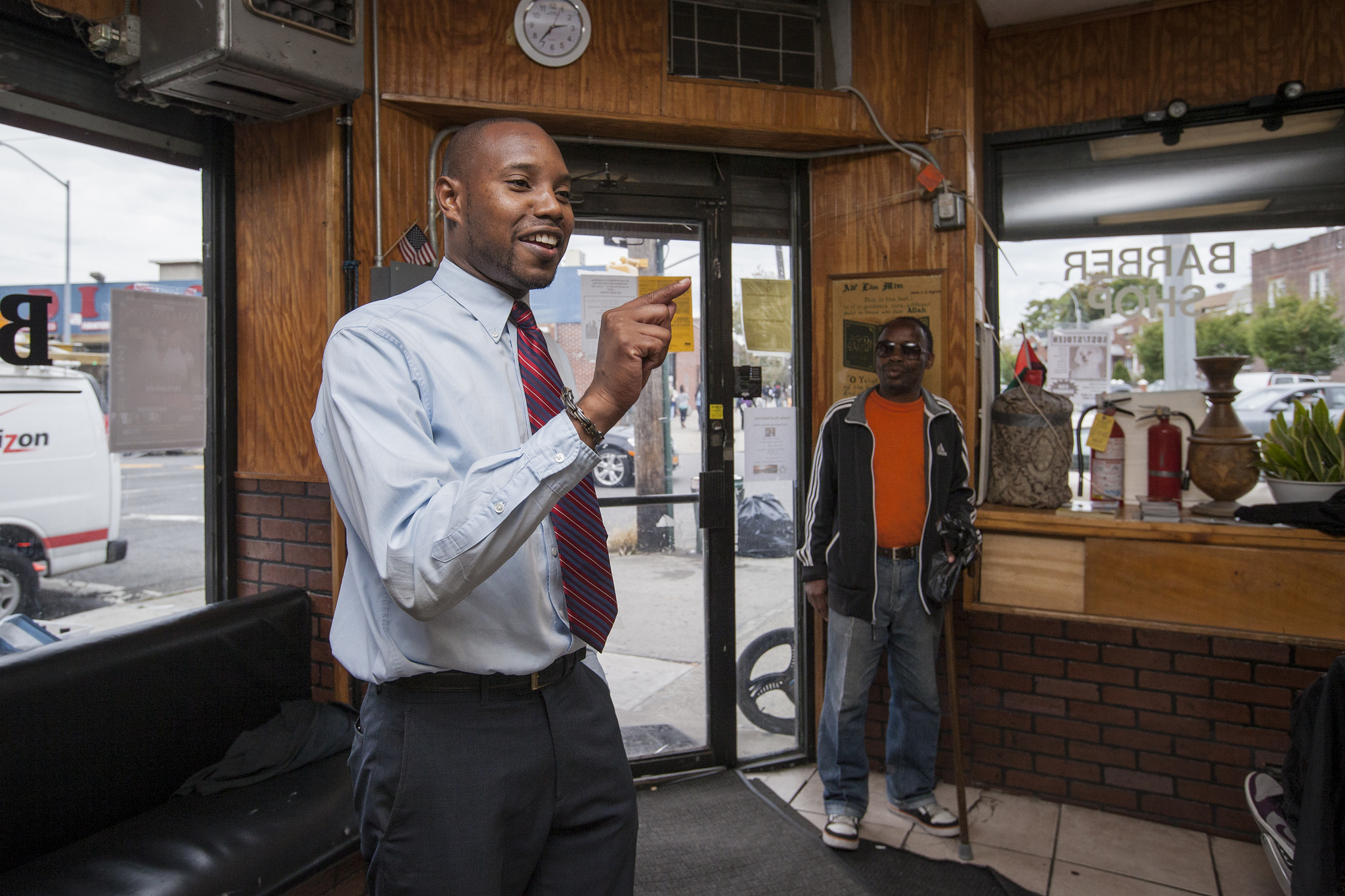
Banks first learned that the nonprofit Samaritan Village was planning to open the shelter back in April 2012. At that time, it would have been the third within a five block area. Banks is also the president of the Van Siclen block association, and people would periodically approach him to complain about the shelters that were already there. Many identified themselves as parents and talked about the difficulties of helping their children with homework assignments at the New Lots branch of the Brooklyn Public Library, in space shared with homeless shelter residents, who hadn’t grown up nearby. Again and again, people lamented that the neighborhood needed schools, a community center, a place for the kids to go and be off of the streets — anything but another shelter.
It’s a common reaction. “People are concerned about an institutional structure coming into a residential neighborhood,” a spokesperson for the Institute for Children, Poverty, and Homelessness explained. (The spokesperson asked not to be identified by name because of the sensitivity of neighborhood fights over shelters.) “They’re concerned about what the impact is going to be on the resources that may already be scarce in that neighborhood, tax on the transportation system, and noise levels. A lot of people are concerned that the fact that there is a shelter might impact their real estate values.”
In response to the proposal, the East New York Coalition sought legal advice from the law firm Tane, Waterman and Wurtzel, with plans to seek an injunction against the shelter based on alleged violations of building and zoning codes. But within months (at which point the shelter had already opened its doors), the group abandoned this strategy.
This past summer, Banks began building a case against the Department of Homeless Services on broader, constitutional grounds. The East New York Coalition has not yet filed suit, but Banks is ready to argue to whoever will listen that the agency has unfairly burdened East New York with more shelters than any one neighborhood should have. The neighborhood, he says, already faces high rates of violent crime, slow emergency response times, and strained public utilities, all of which are exacerbated by the presence of homeless shelters. His goal is to at least slow the rate at which homeless services opens new buildings for emergency and transitional housing in East New York, and to open the site selection process to greater public input and transparency.
At heart of the coalition’s case is the “fair share” clause of the city charter, which requires that facilities such as homeless shelters be distributed evenly throughout the city. Fair share, which was incorporated into the city charter in 1989, is meant to allow the city to provide essential services while ensuring the burden of providing these services is spread out. On the surface of things, the city has never departed from this principle. Shelters, for example, are distributed evenly, from borough to borough, in proportion to their respective populations.
But within boroughs, fair share breaks down. Brooklyn’s shelters are heavily concentrated around Bedford-Stuyvesant, East New York, Crown Heights, Flatbush, Brownsville, and Ocean Hill. With a combined population of 933,000, according to data from the 2010 US Census, these neighborhoods are home to 112 shelters. (This figure, which comes from a May city comptroller’s report, varies depending on the chosen definition of “shelter,” which can include halfway homes, in-patient psychiatric facilities, and other institutions whose clients aren’t necessarily homeless.) The rest of the borough, with a combined population of 1.57 million, is home to only fifteen. Banks estimates the number of shelters in East New York alone at fifteen.
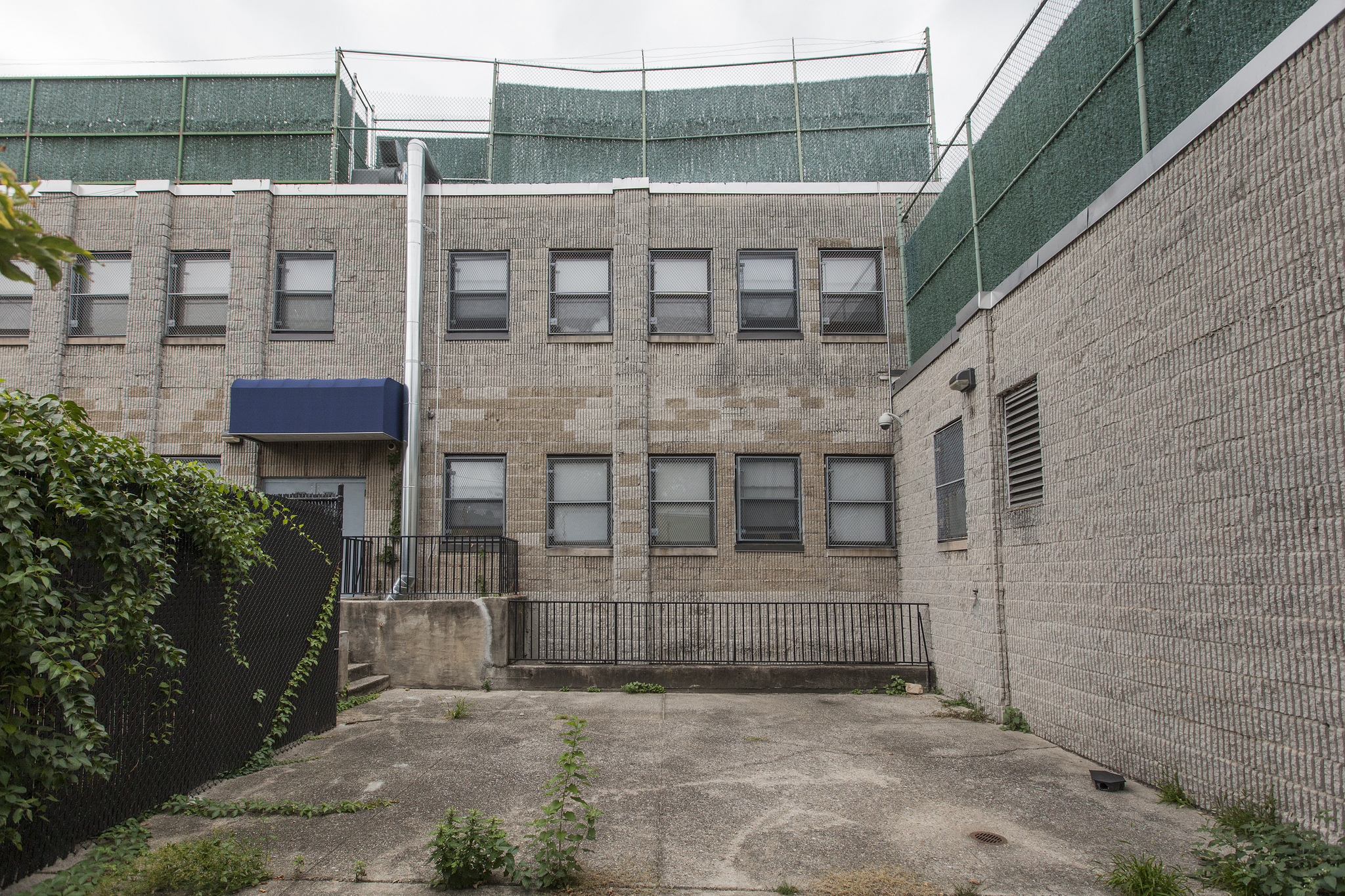
Banks says the goal of the lawsuit is to prove that the current application of fair share is insufficient. Currently, when the Department of Homeless Services decides to open a new shelter, it is supposed to go through the city’s Uniform Land Use Review Procedure. Neighborhood groups have ample opportunity to weigh in. The proposal must be included in the annual Statement of Needs, a comprehensive document prepared by the Department of City Planning, in which each city agency outlines the size, location, and area served for each project it hopes to undertake in the coming year. Homeless services is required to hold public hearings with the local community board and the City Planning Commission, and the City Council can hold hearings of its own.
Yet the application of uniform review procedure can be inconsistent. The May report from the city comptroller concluded that it is not always clear which new facilities are subject to the procedure. And when a prospective shelter is to be operated by a private social service agency, the process involves fewer opportunities for community input than when the shelter is to be operated directly by homeless services. Often, a nonprofit like Samaritan Village must merely demonstrate that a proposed shelter location is ideal (and that it has considered alternate sites) and notify the local community board of its intent to open a shelter. The Van Siclen shelter was not named in the most recent Statement of Needs, suggesting it was not subjected to the level of scrutiny prescribed by uniform review procedure .
Getting familiar with Brooklyn’s shelters, or at least familiar enough to write about them, can be rather arduous. Shelter employees tend to speak in short, guarded sentences when they are not acutely curt and impatient. Mention of the impending East New York Coalition lawsuit made them even more laconic. Their clients, for whom privacy is a scarce commodity, are often protected with confidentiality rules that make interviews impossible to arrange in advance. Non-client visitors are rarely let in past the front door.
At an East New York shelter operated by the private nonprofit Services for the Underserved, I struck up a conversation with a woman in her early thirties, sitting on a stoop outside the building, who had arrived there from central Illinois. Pale, round-faced, and tattooed on both arms, she described her eagerness to find work (“I’ll do anything. Fast food. Whatever.”) and spoke approvingly about the social workers she’d met.
It abruptly began to rain, and we squeezed under the portico on Dewitt Avenue. Moments later, an administrator, who declined to give her name, poked her head out of the front door and told me that I couldn’t hang around. The person who dealt with the press, she explained, was in the development department. She wrote down the department’s phone number on a yellow sticky note and sent me on my way.
Like many of New York’s newer shelters, the Dewitt Avenue facility is not simply a shelter per se. Distinguishing themselves from earlier models that crammed people into barracks-like spaces, nonprofits like Services for the Underserved generally seek to address homelessness by addressing its root causes; the organization’s website describes a long list of services its provide to clients, including substance abuse counseling, medical, and psychiatric care, as well as parenting classes and career training. The organization (and its services) are listed favorably in the New York City public advocate’s Housing Resource Guide. Ethan Sribnick, who studies homelessness policy at the Institute for Children, Poverty, and Homelessness, says the “transitional” style of housing practiced by Services for the Underserved has been the norm in New York City since the 1990s.
Transitional housing offers Brooklyn’s homeless more support than did previous policies. Yet the shelter system continues to struggle for lack of resources; and it is very, very busy. Between 2008 and 2011, homeless services reported a seventeen percent increase in the number of families entering the shelter system across the city (between 2005 and 2009, Bedford-Stuyvesant, Brownsville, and East New York absorbed the greatest numbers of homeless, with Concourse, Soundview, and University Heights in the Bronx close behind). Historians have described the leap in homelessness as a concussive, destabilizing wave, of a kind not encountered by the city since the late 1970s, during Edward Koch’s mayoralty. In that era, the city’s economy was in steep decline, a victim of a disappearing manufacturing industry and middle class flight to the suburbs.
Today, New York’s economy is booming, at least comparatively, but the city also faces unprecedented levels of inequality. By one measure, Manhattan is the most unequal county in America, with the top fifth of earners taking home more than 80 times the bottom fifth. Rising housing prices have pushed people farther and farther to edges of the outer boroughs, and as reported in a recent Institute for Children, Poverty, and Homelessness study, many people have been pushed out of their homes entirely.
The shelter population has changed significantly since the early years of the Koch mayoralty. In those days, shelters were typically occupied by single males; shelters today have begun to house entire families. The number of young single mothers has risen so sharply that young mothers, many of whom grew up the shelter system or in foster care, are now a major constituency in the city’s shelter census. The average shelter resident today is a woman between the ages of 18 and 25.
The responsibilities shelters face has also changed. During Koch’s first term, lawsuits brought against the city by the Legal Aid Society and the Coalition for the Homeless established a grounds for a constitutional “right to shelter” in the city charter. The city was under enormous pressure to provide emergency shelter to men, women, and families as a result of these decisions; combined with Reagan-era federal cutbacks, which shifted the burden of funding for social programs to states and municipalities, New York was forced for several years to improvise, repurposing a swath of former schools, hospitals, and hotels for short-term, emergency housing.
The reputations of these facilities were awful. The writer and activist Jonathan Kozol captured the harsh realities of life in the larger “congregate” shelters, which kept clients in large, uncomfortable gymnasiums, in a series of articles for The New Yorker, which formed the basis for the 1988 book Rachel and Her Children. “It doesn't work in humane terms; nor does it function as deterrence,” Kozol wrote of the shelters. He called for them to be dismantled, labeling them a failure to be noted “by municipal leaders elsewhere.”
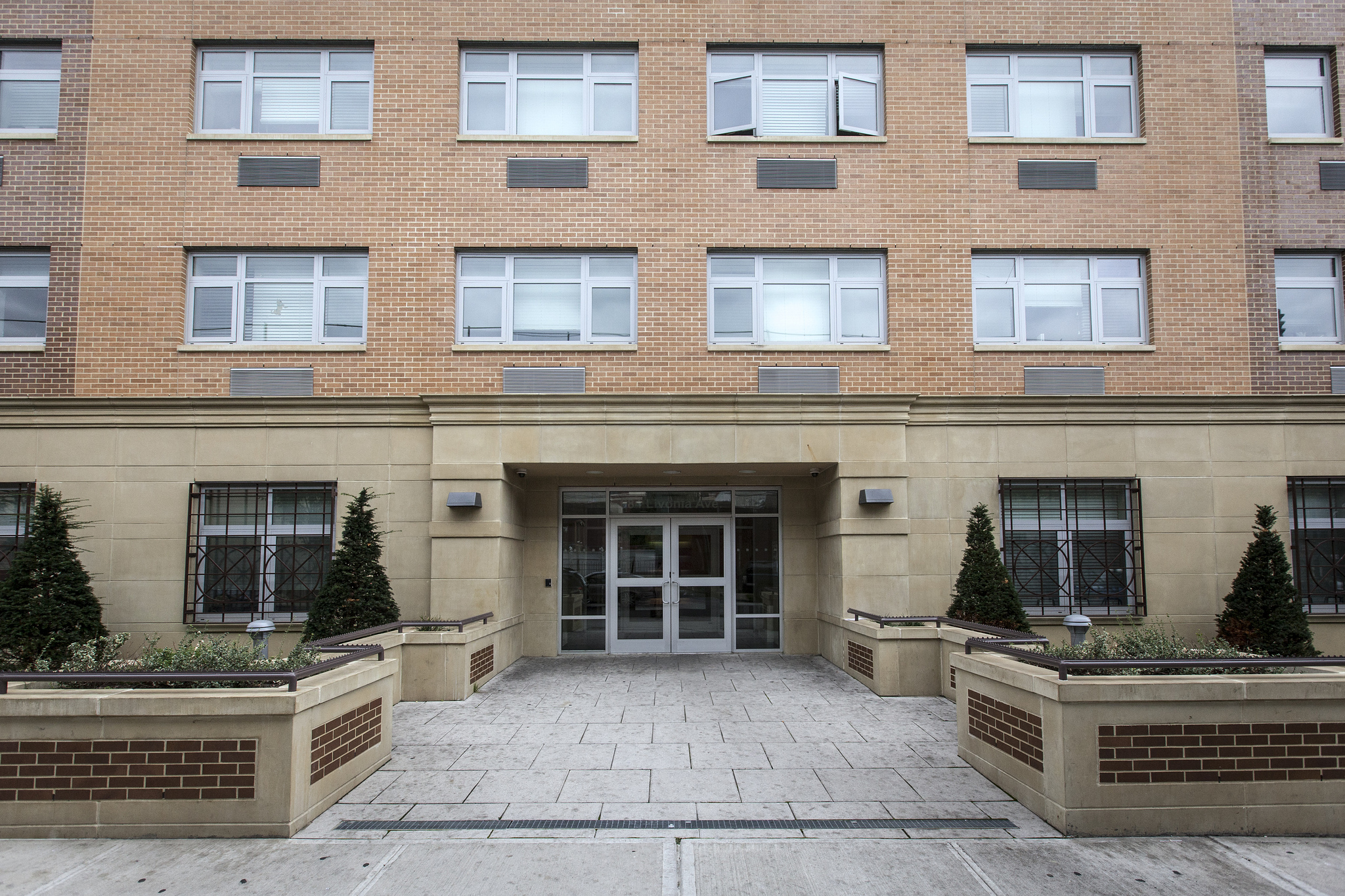
Another popular emergency option, placing families in a Midtown hotel, was similarly ineffective. These “welfare hotels” provided fertile territory for drug dealers and panderers and were also extremely expensive. In 1985, the New York Times placed the annual cost of housing a homeless family in a hotel at $36,000. One hotel owner was found to have made an annual profit in excess of $3 million, all at the city’s expense.
Compelled by all the bad press, Koch embarked in the mid-eighties on a $5.1 billion plan to renovate thousands of apartment units in buildings that had been foreclosed on by the Department of Finance, and convert them into low-income housing. Koch’s ten-year project, called Housing New York, turned many of these spaces into “transitional” housing, with provisions for domestic violence and substance abuse counseling, job training, and other social services on-site or nearby.
Housing New York marked a shift in direction for the city’s homelessness policy, from seeking to get a roof over people’s heads, to the broader, more elusive goal of alleviating chronic poverty. The program took a long time to implement — longer, in fact, than Koch’s tenure in office — but for all its expenses and built-in encumbrances, policy analysts describe it with approbation.
“Koch’s plan did more to provide affordable housing than any other program,” Sribnick told me, while hastening to add that it did not do enough. Sribnick also said that in the new millenium, the positive legacy of Housing New York has been badly diluted by a series of ambitious but troubled initiatives by the Bloomberg administration to get families out of shelters. These began in June 2004, when Mayor Bloomberg gave a speech at a breakfast hosted by the Association for a Better New York, in which he unveiled a ten-year plan called Uniting for Solutions Beyond Shelter.
“It is a strong and detailed plan, but ten years is well past the ‘statute of limitation’ for this administration,” the mayor told the audience (this was long before he had broached the subject of a third term). “We are too strong, and too smart, and too compassionate a city to surrender to the scourge of homelessness. We won't do it. We won't allow it.”
With a dramatic vision in mind (Bloomberg told the Association for a Better New York audience he intended to reduce the shelter census by two-thirds by 2009), the then-commissioner of the Department of Homeless Services, Linda Gibbs, made several quick, decisive policy changes, including a reallocation of resources, in which money that has previously been spent on the shelters themselves was instead directed towards rental assistance.
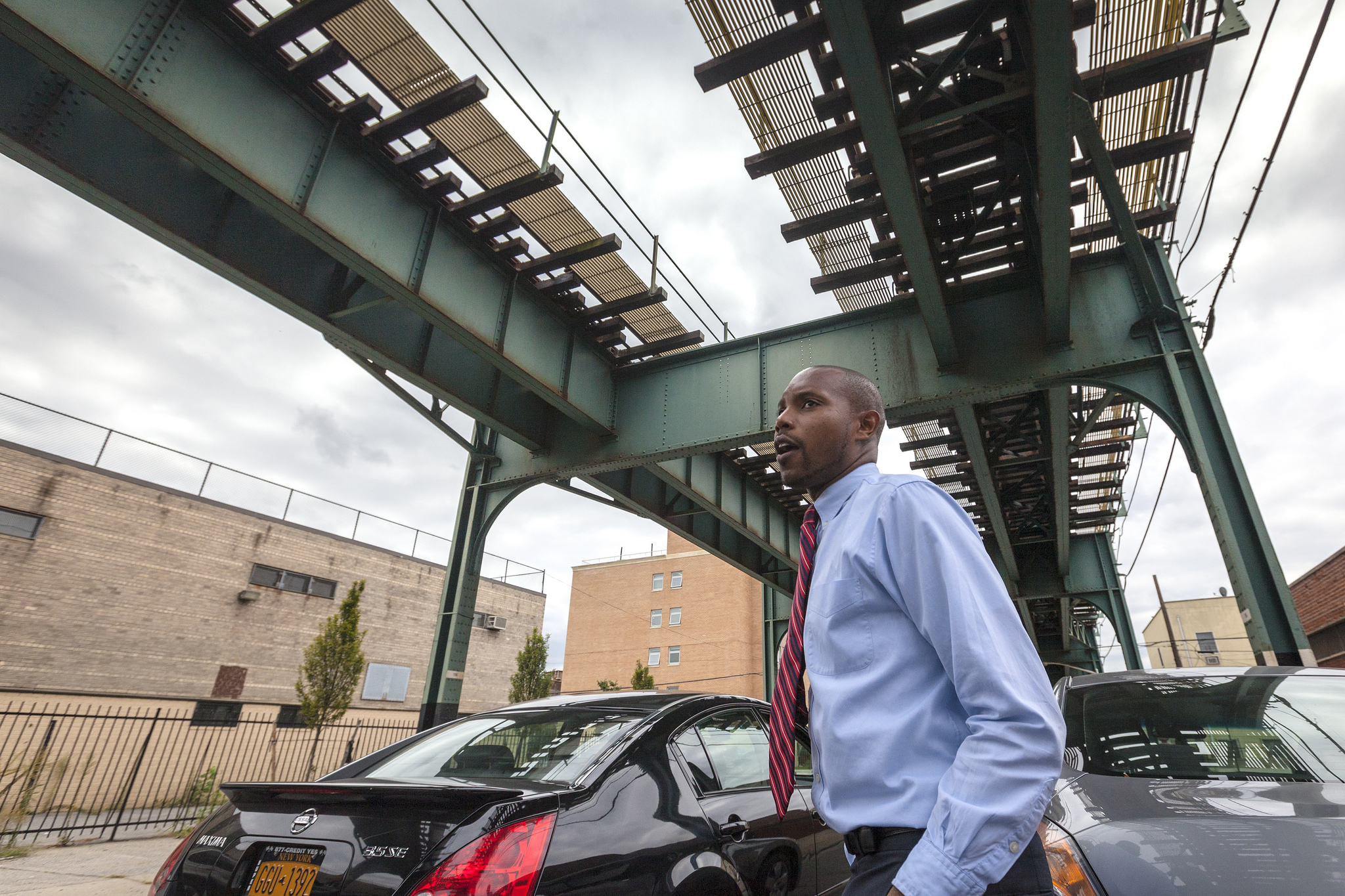
Beginning in 2005, the Department of Homeless Services began offering rental subsidies of up to 100 percent to families who left the shelter system, as part of a rapid rehousing program called Housing Stability Plus. In this new system, a family’s subsidy would be reduced each year — up to five years — by 20 percent, the logic being that a head of a household could, over this period of time, gain steady employment and independence from government aid. The program, which lasted less than three years, was attacked by the advocacy group Coalition for the Homeless, which laid out its criticism in a report titled “Homeless Families at Risk.”
“Thousands of homeless families have been placed into apartment buildings with hazardous conditions as a result of lax standards and weak inspection rules,” the report found. Apartments were often given minimal inspections, and many were unsafe. Landlords receiving a check from the city for their participation in Housing Stability Plus often got away with leaving windows broken, lead paint on the walls, lack of heat and hot water, vermin infestation, and broken ceilings or floors. Appliances and fixtures were indefinitely left out of order.
"We give the Bloomberg administration enormous credit for stepping up to the plate and creating a locally funded rent subsidy program for homeless families,” Mary Brosnahan, the coalition’s executive director, said when the report was released. “However, this report makes clear that the program is in a need of a gut rehab in order to truly provide safe, affordable, stable homes for homeless families and individuals in New York City.”
In another report titled “Revolving Door,” the Coalition for the Homeless argued that it was almost impossible for a family to increase its take-home income from working enough to compensate for corresponding decreases in Housing Stability Plus benefits. At a City Council hearing in April 2006, a representative for the group predicted that “hundreds and potentially thousands” of the formerly homeless would return to the shelter system in the coming years.
The next year, Housing Stability Plus was replaced by a new, similar plan called Advantage NY, a conglomeration of three initiatives that included a subsidy program called Work Advantage. Under the new arrangement, families in which the head of household worked at least 20 hours each week were offered a 100 percent city-funded rental subsidy, lasting two years. In a September 2008 briefing, Robert Hess, then the commissioner of the Department of Homeless Services, wrote of a renewed focus on “client responsibility,” reflected in a policy that required participants to contribute a $50 rent payment each month to their landlord, in addition to depositing a 10-20 percent equivalent of their rent into a “rainy day” account, supervised by an Advantage caseworker. Ideally, a family would find employment by the end of the two-year period, at which point the city would reward it by reimbursing rent payments, and matching its “rainy day” deposits up to $3,000.
Unit inspection standards were raised, but the shorter eligibility window meant less time to find work before the subsidy ran out. Data culled from the Department of Homeless Services’ Critical Activities Report indicates a slight increase in the shelter census from 2005 to 2007, and another from 2007 to 2011.
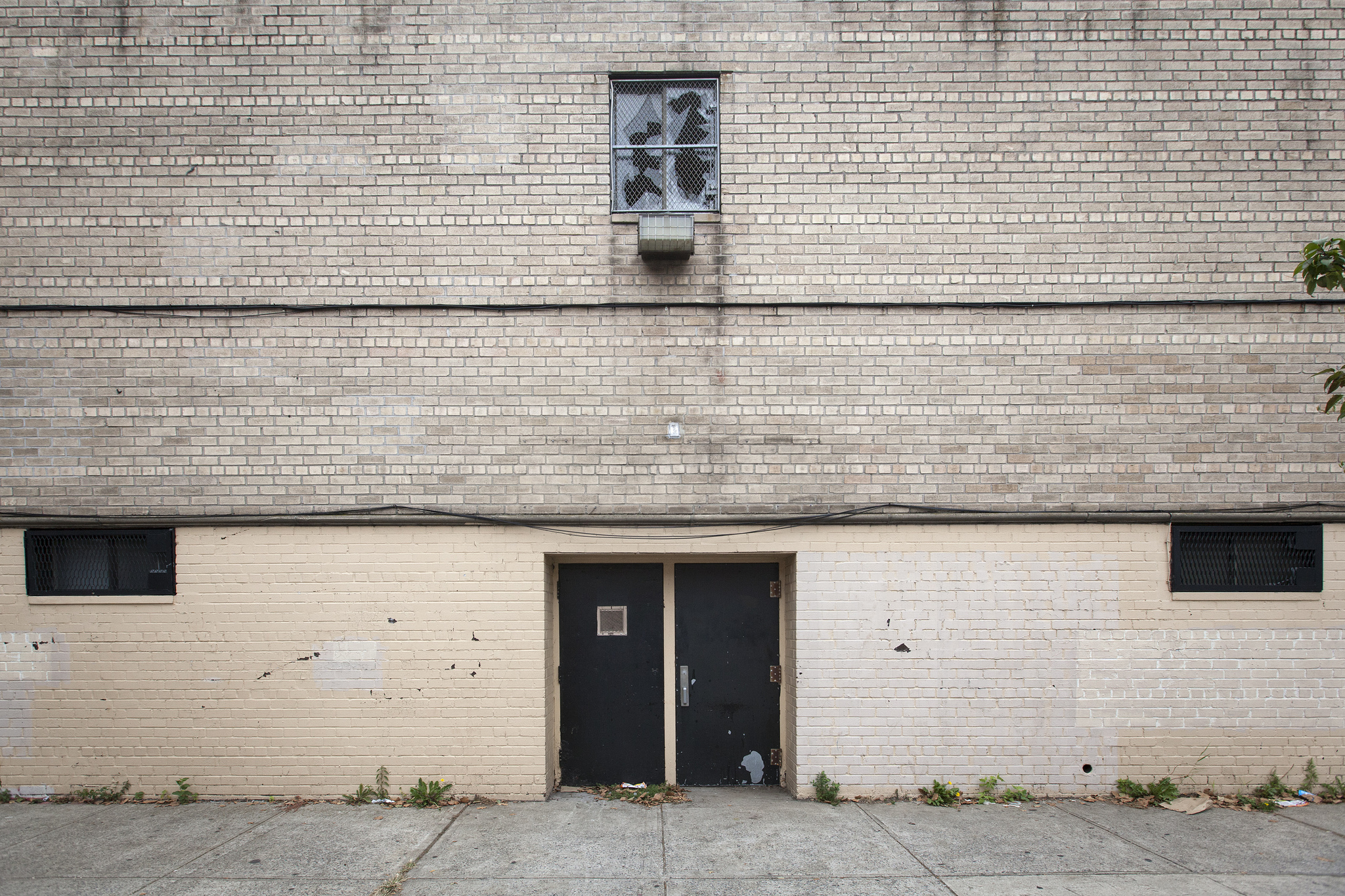
In spite of regulations meant explicitly to rein in the number of families found eligible for a subsidy, the number of families who were approved for aid increased by 46 percent between 2004 and 2011. Most disturbingly of all, recidivism, or the rate at which families leave and re-enter the shelter system, climbed to 49 percent over this period. While Bloomberg aggressively touted Housing Stability Plus and Work Advantage as thrifty and fast-working, critics have described the programs as hasty, and above all, overly reliant on pushing clients to work, rather than addressing the root causes of homelessness.
Among these critics is Ralph da Costa Nunez, the current president of the Institute for Children, Poverty, and Homelessness. A punchy, dark-haired former policy analyst for the Koch administration, Nunez has his own biases (he described the Housing New York program as “a model for the rest of the country”), but he has been out of politics for more than two decades, and the research he oversees is explicitly non-partisan.
Nunez blames the high rate of shelter recidivism on the Bloomberg administration’s dedication to rapid rehousing, which he says took vital emphasis away from providing the job training or skills development that would help formerly homeless families find work that would provide a living wage. “Homelessness is not just a housing issue. If it was, it would be solved by now,” Nunez said, repeating a sound byte I had heard him recite again and again in his books, op-eds, and interviews on TV. The problem with the housing subsidies, he said, was that they missed the root causes of homelessness. “They looked at the problem as if it were just a housing issue,” he said. “And it’s not.”
With the calm, patient tone of a college professor, Nunez talked about the 150,000 to 200,000 families who, in 2004, were living off the shelter grid, having instead been doubled or tripled up with family members. He rattled off figures about the average participant in Work Advantage, who, lacking a steady work history, education, and basic skills, was wholly unlikely to find employment before a city rent subsidy ran out. He also pointed me to another policy briefing, titled “Rapidly Rehousing Homeless Families,” which estimated the cost of housing recividist families between 2004 and 2011 at $1.05 billion.
In March, the Coalition for the Homeless released a report announcing that the number of homeless New Yorkers sleeping in emergency shelters had passed 50,000, and that the number of homeless children had passed 21,000 per night, both all-time highs. About half of the homeless family population is housed in privately owned, for-profit cluster sites or hotel rooms, which offer minimal social services. Given the slow rate at which new shelters are built (and approved by community boards), this number is likely to rise.
Some of the stories involving these cluster-site shelters approach high farce. In 2009, after the collapse of the real estate market, a developer named Avi Shriki found himself in the for-profit shelter business when he failed to find buyers for a set of luxury condos in Crown Heights. Unable to unload the units at an average asking price of $350,000, he shrugged his shoulders and signed a ten-year contract with the Bushwick Economic Development Corporation, which then offered the spaces to the city at a rate of $90 a night, or about $2,700 a month. As a result, families that would otherwise have been homeless were now living in luxury condos, with budgeted social services on the menu. "It's beautiful," Nelson Delgado, a 36-year-old unemployed truck driver, told the New York
Decidedly less uplifting are the cases in which property owners doing business with homeless services coerce their tenants into moving out, hoping the city will pay them more handsomely to house the homeless. Such was the alleged plight of Melvina McMillan, a woman in Flatbush who filed a wrongful eviction suit against her landlord, Barry Hers, over the summer. Speaking to WNYC, McMillan said that a building that once housed about 80 families now held on to about a dozen private tenants. Many of these tenants had been obliquely forced to leave by dangerous code violations, appliances out of order, mold in the walls, leaky pipes, and roaches, none of which had been attended to in months. If she vacated the space, McMillan said, homeless services would pay $3,000 to rent it for shelter space. While part of this would go to CAMBA, a nonprofit organization tasked with providing social services, a hefty chunk of it — more, McMillan was certain, than she had paid for rent — would go to Hers, for his trouble. I called Hers to see if he had a comment to the WNYC story, but got no response. (When his secretary put me on hold, the office telephone system played an audio recording of the Rush Limbaugh Show. The next time I called, it was the Sean Hannity Show, followed by “25 or 6 to 4,” by the progressive rock group Chicago.)
At the Association for a Better New York breakfast in 2004, Mayor Bloomberg sketched out a plan to reduce the shelter census by two thirds. Over the past twelve years, it has, in fact, increased, from 4-5,000 to approximately 11,000 families. The constitutional “right to shelter” continues to compel the city to find a place to house the spiking number of homeless families — and in recent years, eyes have increasingly been turning to Brooklyn.
Last November, a shelter operated in Queens, under the aegis of Aguila Incorporated, a nonprofit focused on transitional housing, and another nonprofit called Housing Solutions USA, was rendered unusable (though not destroyed) by Hurricane Sandy. Looking for a new place to house the old building’s occupants, the organizations chose a vacant building at 165 West Ninth Street, in Carroll Gardens. The building had been originally been slated for luxury condos. When they heard about the proposal, members of Community Board 6, which includes Carroll Gardens, sought to intervene.
Perhaps sensitive to appearing callous, shelter opponents chose their words with caution and directed their complaints at the procedure that brought the shelter into being rather than the shelter itself. Daniel Kummer, the chair of Community Board 6, bemoaned the lack of transparency in the process, telling the Brooklyn Paper that the public had been “left out of any meaningful and ongoing planning discussions.” Steven Kirkpatrick, a lawyer for the neighborhood group Coalition for Carroll Gardens, argued that the city’s housing code — which prohibits more than three unrelated persons from occupying a single unit — made it unlawful for the proposed 170 occupants to be placed in a ten-unit building. In December, the Coalition for Carroll Gardens obtained a temporary restraining order against the building’s conversion, and the shelter was halted. The men who occupied the building had been allowed to stay for less than ten days. No alternative site was proposed.
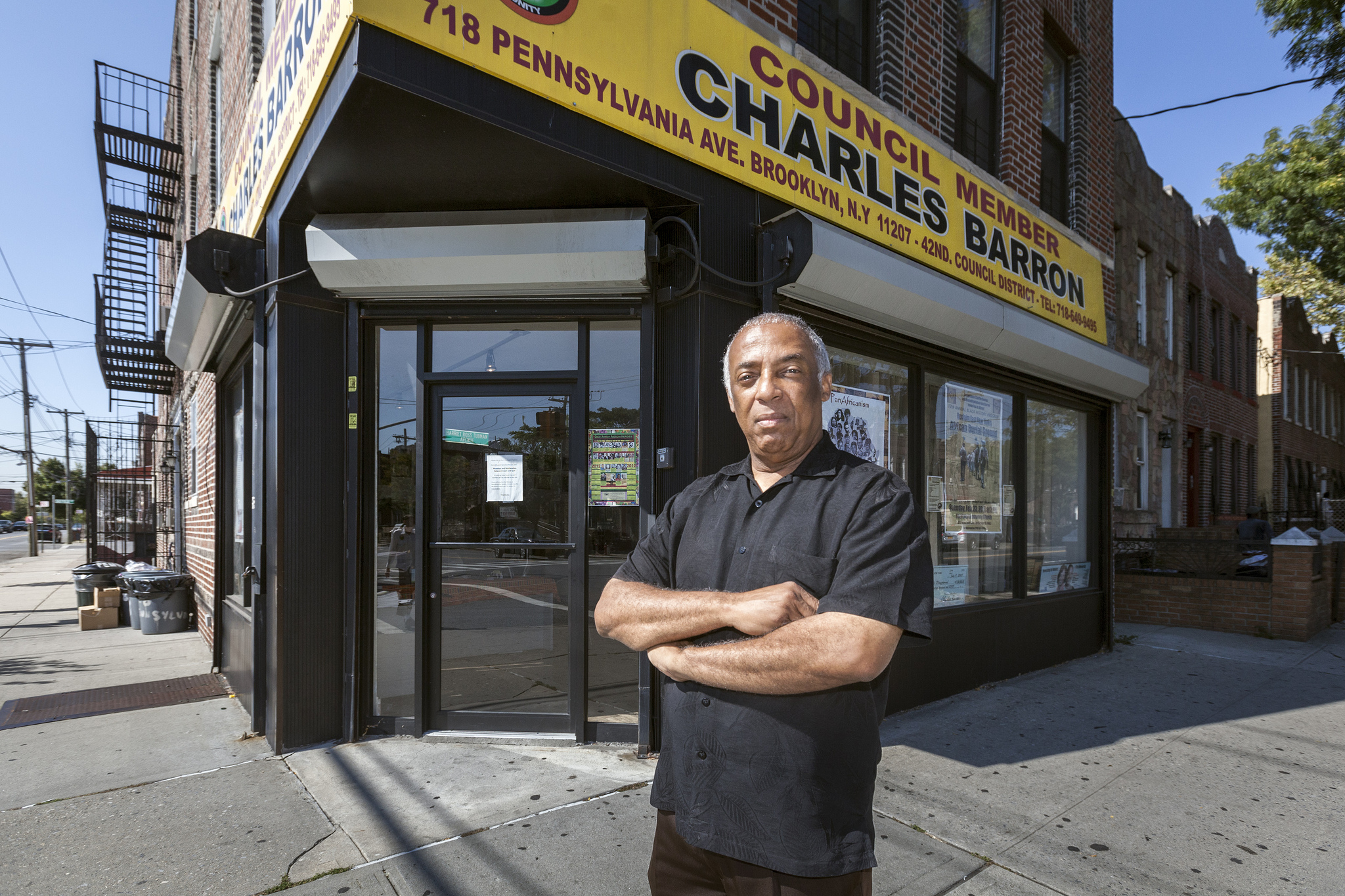
The fight over the shelter in Carroll Gardens — a historic, upscale neighborhood known for its Bastille Day block party — contrasts starkly with similar fights in less affluent neighborhoods, where disputes over shelters have lately revolved around the principle of fair share. In East New York, local activists and office holders concede that the city needs shelters, but insist the facilities be evenly distributed among neighborhoods.
After the Department of Homeless Services announced its plan to open the Livonia Avenue shelter, Barron, who has represented the neighborhood in the city council for more than a decade, called a press conference to announce his plan to fight the shelter. A former Black Panther with a penchant for grabbing press attention (in the past, he has spoken admiringly of Robert Mugabe and Muammar Gaddafi), Barron has many times described the city’s housing policies as racist. At the press conference, he likened the current shelter system, along with the prison system, to a modern-day extension of the slave trade. Barron, who has made this comparison before, might have sounded hyperbolic, even erratic, particularly when compared to his colleague Councilman Brad Lander, who represents Carroll Gardens and who confined his complaints about the Aguila – Housing Solutions shelter to matters of procedure, permits, and building safety. Yet this contrast in styles also highlights the ever-growing chasm between Brooklyn’s well-to-do neighborhoods and those that continue to struggle. For communities like East New York, the issue is never a single shelter — it’s the entire system.
Last Friday, I went back to East New York to meet up with Banks and visit the site of the proposed shelter on Livonia Avenue. During our walk, I asked Banks about a study by the Institute for Children, Poverty, and Homelessness, which described a two-tiered housing and homelessness crisis in East New York and Brownsville. The report found that an already woeful lack of access to basic services has been compounded by the arrival of families forced out of Bushwick or Bedford-Stuyvesant, who move further east and begin to compete for space.
Banks nodded along. “It’s mind-boggling,” he told me, referring to the “shelter industrial complex” that has developed to accommodate the new arrivals. “The City of New York refuses to truly deal with the homelessness crisis that’s facing the community,” he said. “It’s disgusting. You have communities like ours, who are oversaturated with shelters. Then it becomes an issue of ‘them against us.’”
Banks acknowledged that the city needs shelters. But like other public facilities, such as hospitals, garbage dumps, or detention centers, no one wants to live next door to one. Having so many in a neighborhood like East New York seemed unfair.
If the East New York Coalition proceeds with its litigation, Banks is hopeful it will find a judge who understands the significant burdens that come with living near a homeless shelter and who looks with sympathy on the people in Banks’s neighborhood who feel doubly ill-used. As things stand, the edges of Brooklyn have become a theater of conflict between the poor and the very poor, the disadvantaged and the dispossessed, resulting in pain, indignation, fear, and doubt for all affected. The conflict raises a fundamental question about inequality and our collective willingness to address it. Does the answer lie in our own backyards?